Modern museums can truly be viewed upon as works of art themselves. They no longer aim to merely house art collections and exhibitions, but are built to create cultural and architectural landmarks. We have collected some of the most spectacular museums of 2019 that are visit-worthy for their own sake.
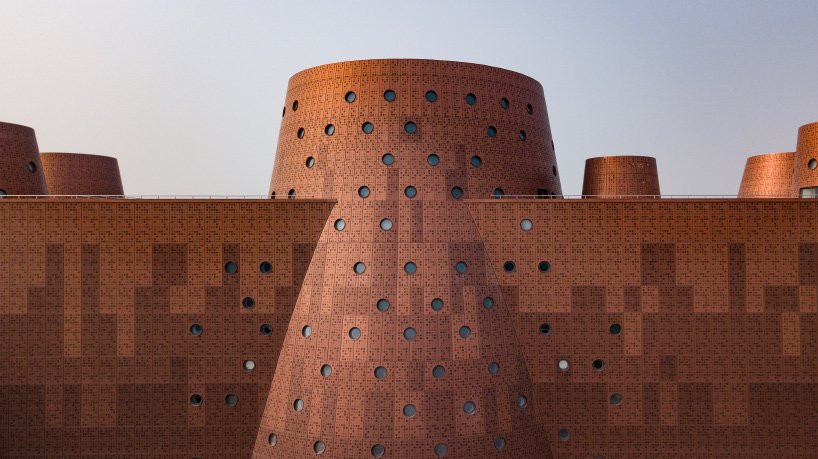
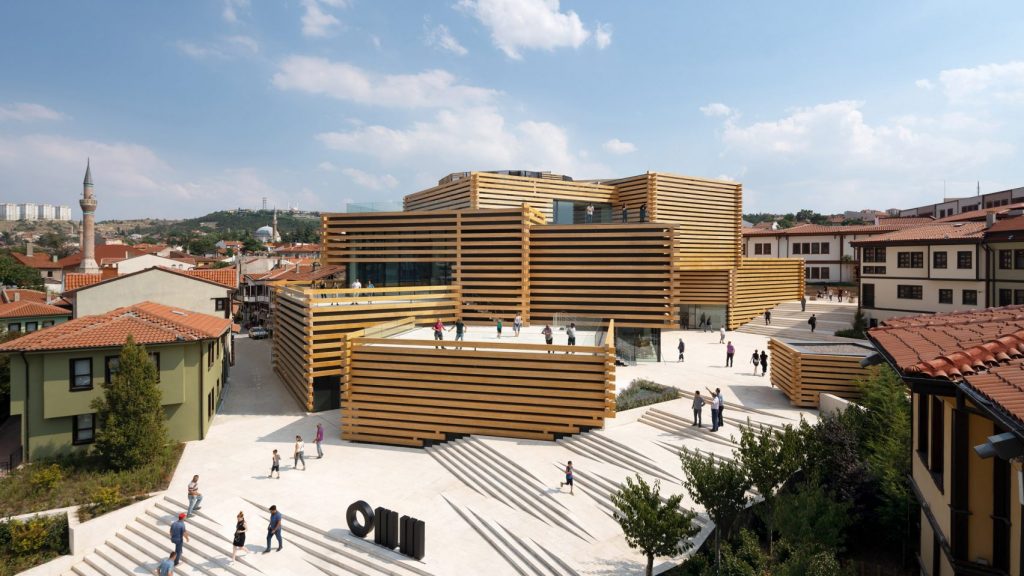
Odunpazari Modern Museum by Kengo Kuma and Associates (via dezeen)
Kengo Kuma and Associates, studio with offices in Tokyo and Paris, has unveiled the Odunpazari Modern Museum in Turkey which houses the modern art collection of architect Erol Tabanca. The three-storey building consists of a cluster of square-shaped boxes made from interlocking laminated timber beams stacked on one another.
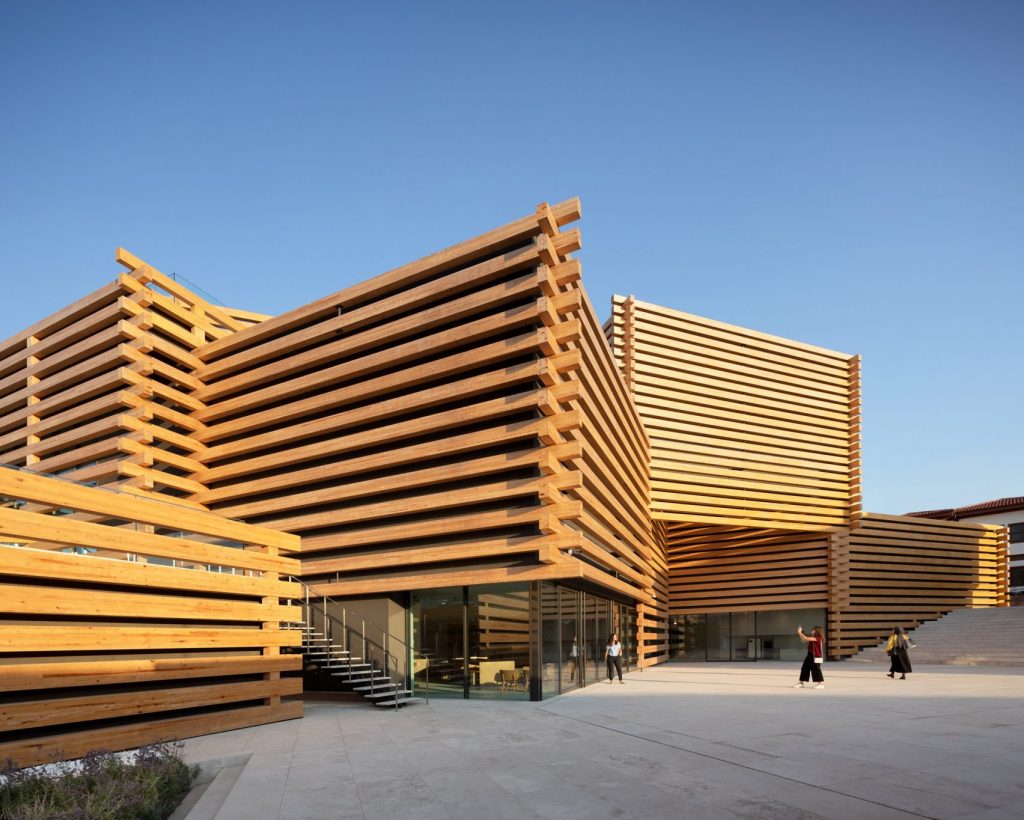
Odunpazari Modern Museum by Kengo Kuma and Associates (via dezeen)
The choice of material pays homage to the historic district of Odunpazari which used to be a centre for timber trading. According to the team, ensuring that the building spoke to the history and memory of its setting was their main focus. The resulting museum is more than just a place to enjoy the art but rather the connection to the history and the memory of the place.
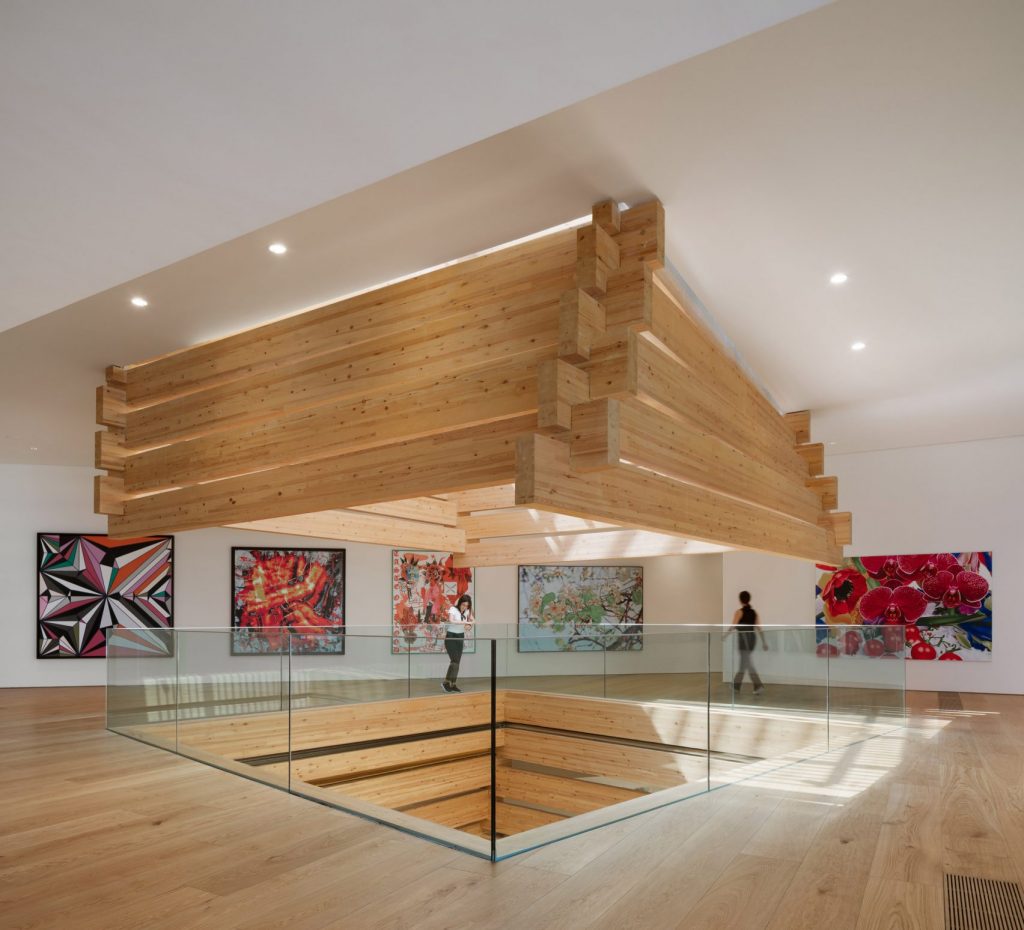
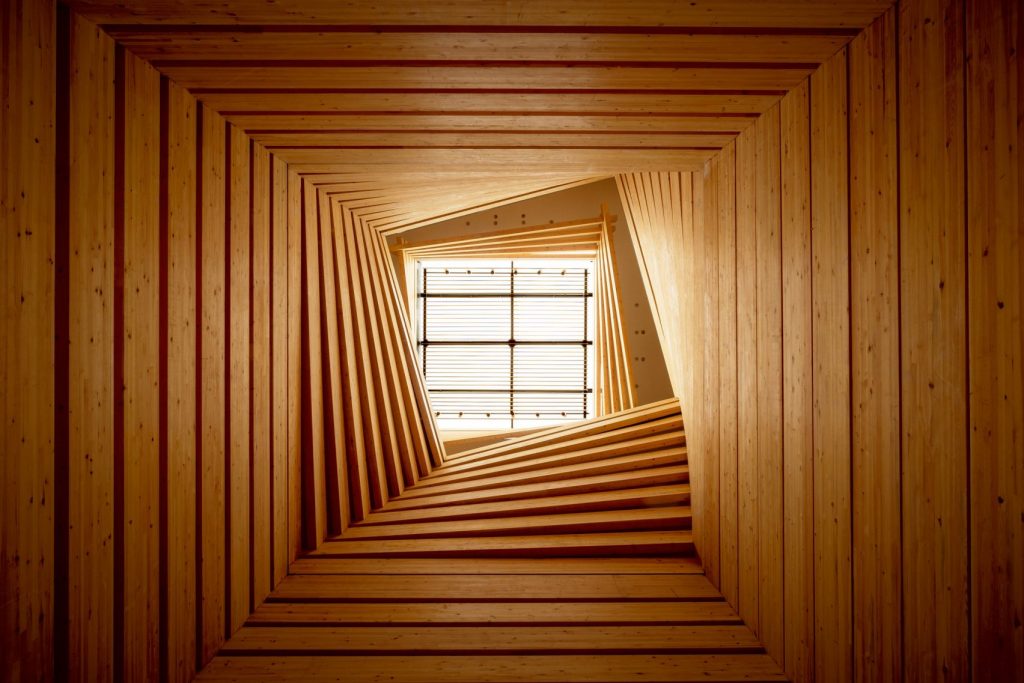
Odunpazari Modern Museum by Kengo Kuma and Associates (via dezeen)
To make a link to the adjacent Ottoman houses, the boxes were cantilevered and rotated, which offers a very special and unexpected experience recreating the non-linear journey of visiting the inside of the museum. At the centre of the building where four of the stacked blocks meet, there is a full-height atrium with a timber-lined square skylight. Larger open galleries for events and exhibitions are situated on the upper floors, while lower floors encompass smaller more intimate spaces. The building also features a café and a shop.
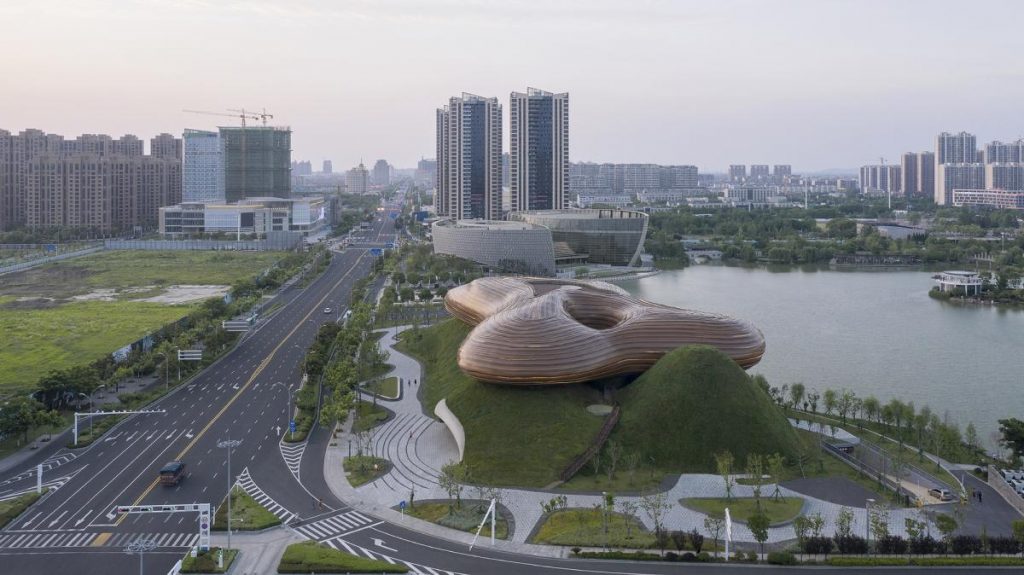
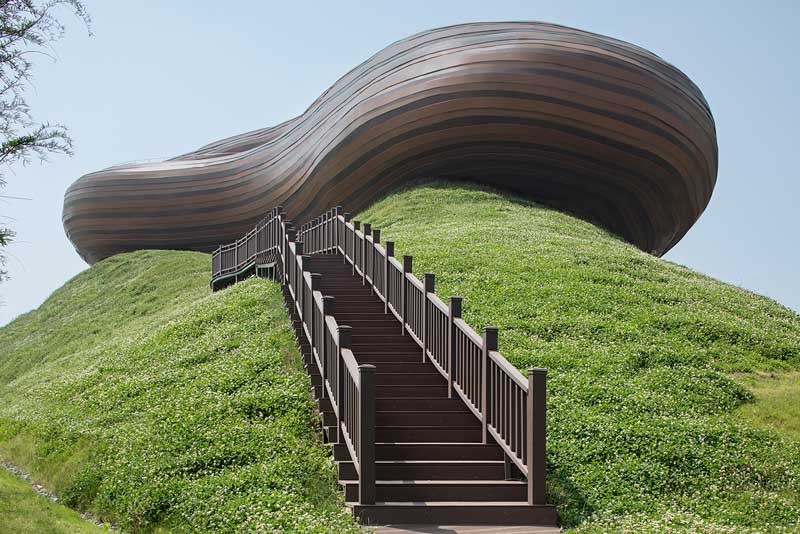
The Liyang Museum by CROX architects. Ph: Xia Zhi
The new Liyang Museum in eastern China focusing on the local history is designed by CROX architects with offices in Shanghai and Taipei. The flowing and organic shape of this cultural landmark is inspired by a Chinese musical instrument, the Jiaoweiqin, which is also one of cultural symbols of this region in eastern China.
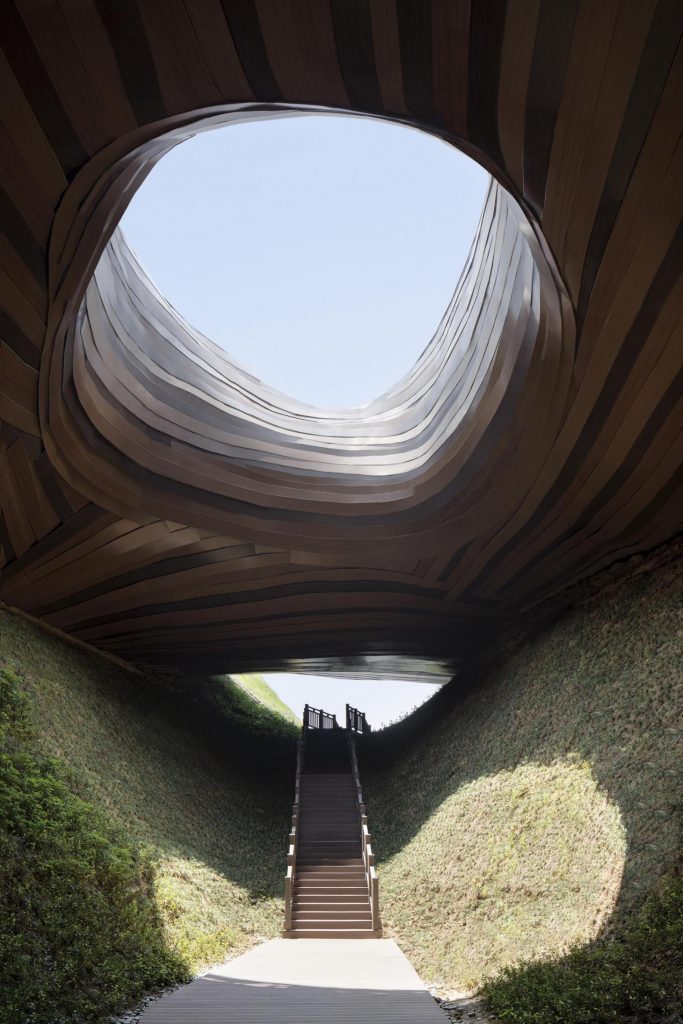
The Liyang Museum by CROX architects. Ph: Xia Zhi
The project is the flagship of the new carefully designed urban district which is defined by an artful blend of the lakeside and public landscaping. The key driver of the building’s organic pebble-like design is the connection between inside and outside, both visually, in terms of lines and overall flow, and physically, in terms of access points and routes.
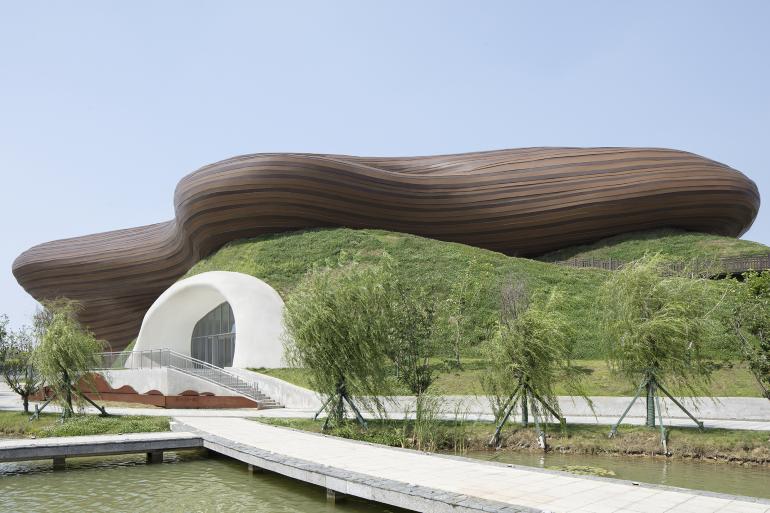
The Liyang Museum by CROX architects. Ph: Xia Zhi
The curvaceous shape of the aluminum-clad museum blends effortlessly with the surrounding landscape, balancing between the natural and the manmade.
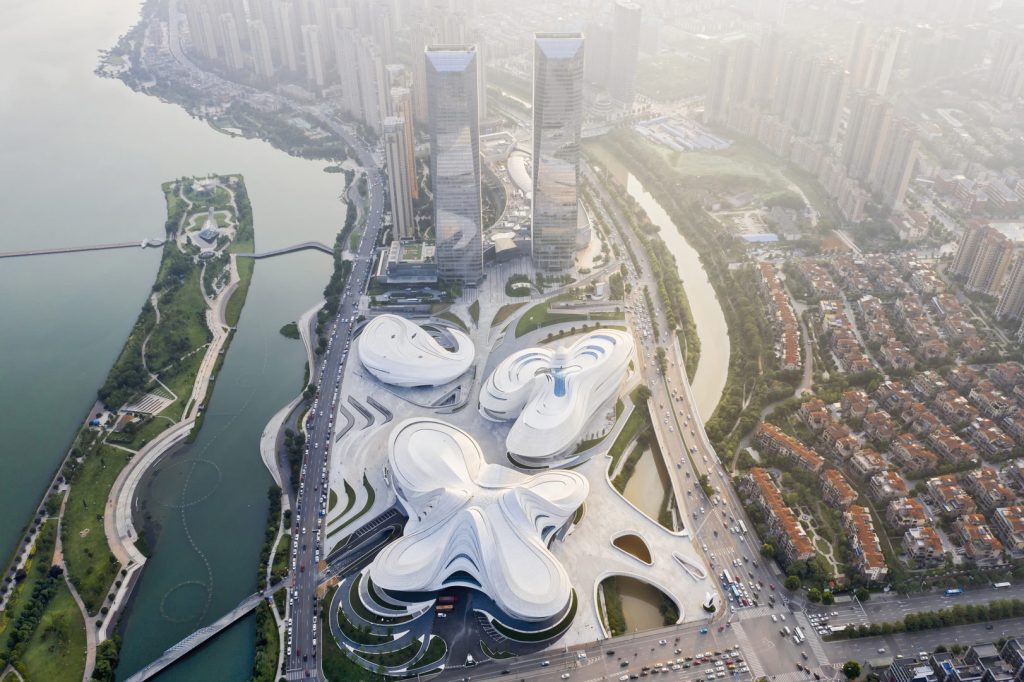
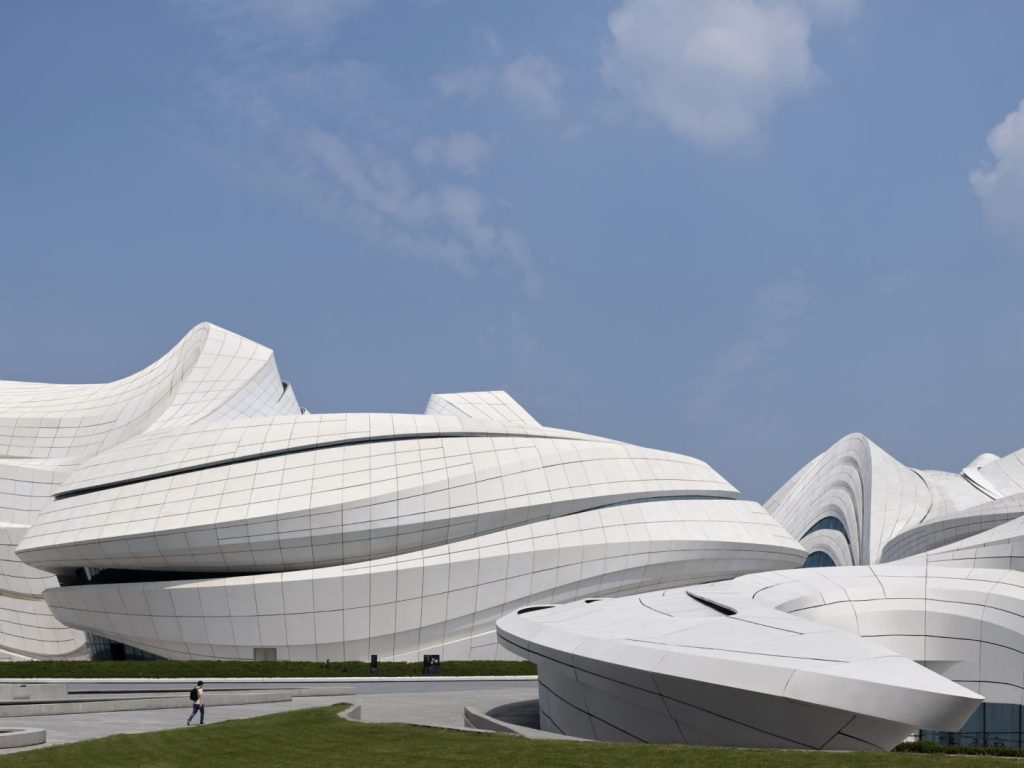
Changsha Meixihu International Culture & Arts Centre by Zaha Hadid Architects; ph: Virgile Simon Bertrand
2019 saw the unveiling of Changsha Meixihu International Culture & Arts Centre by Zaha Hadid Architects. This spectacular complex in China comprises a contemporary art museum, a 1,800-seat theatre, and a multipurpose hall. The ensemble of the three cultural institutions creates a network of external courtyards, giving access to the parks and walking trails that connect with neighboring streets. The courtyards can also host outdoor events and exhibitions.
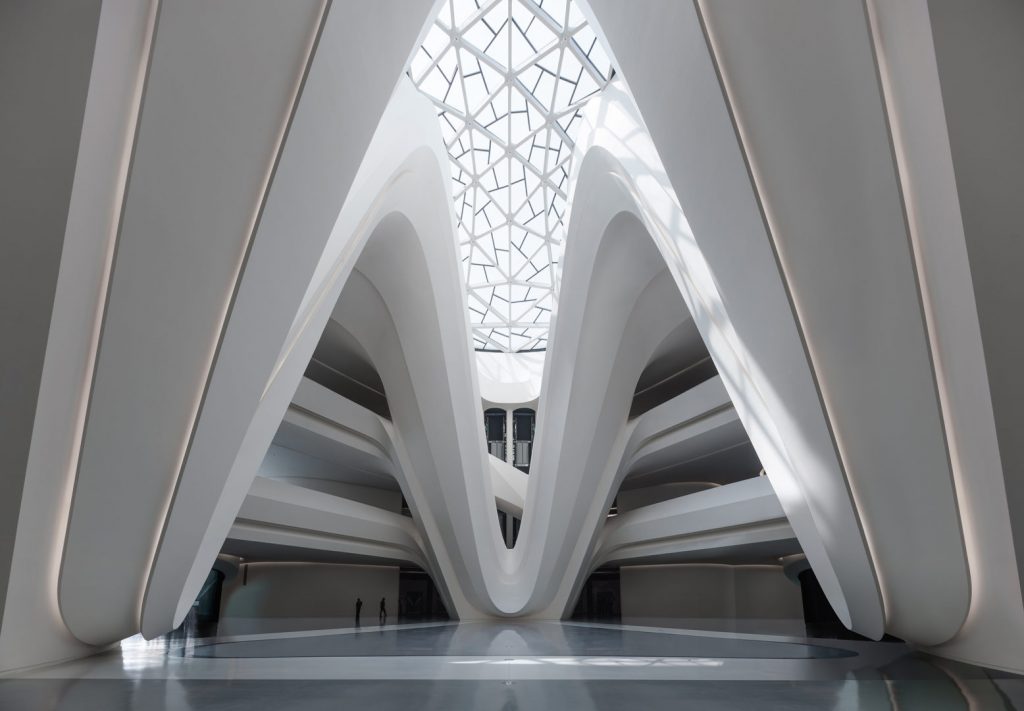
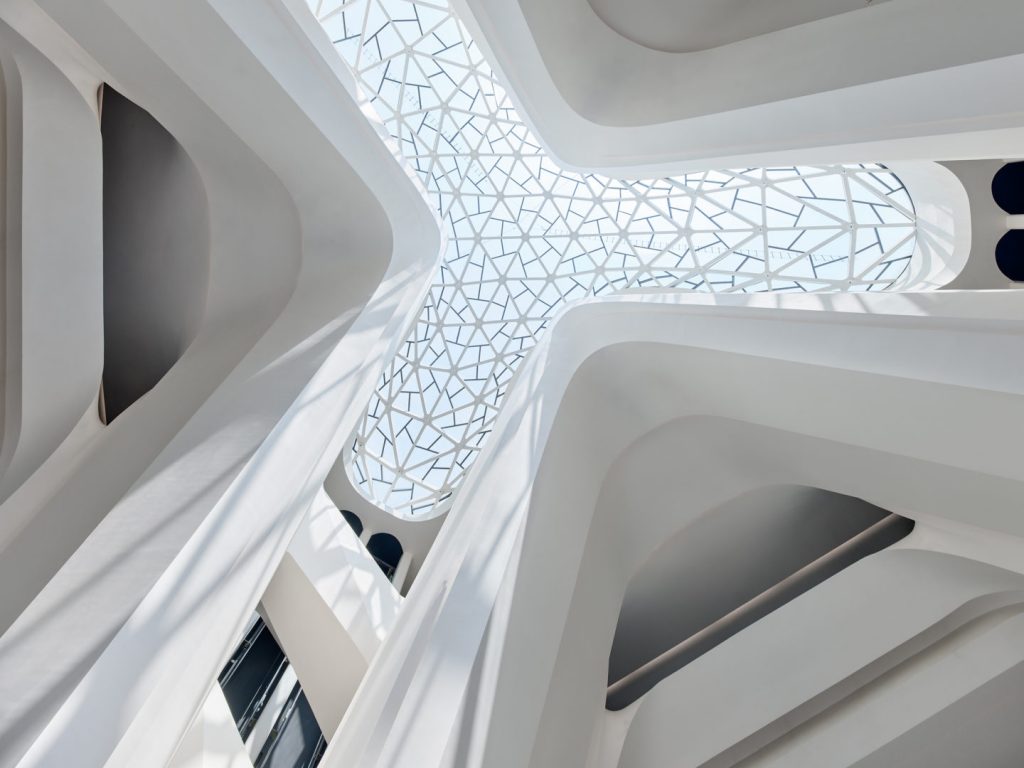
Changsha Meixihu International Culture & Arts Centre by Zaha Hadid Architects; ph: Virgile Simon Bertrand
MICA, the contemporary art museum, includes eight exhibition galleries located around an atrium which is meant for large-scale installations and events. It also features a lecture theatre, a cafeand a museum shop. The grand theatre is designed for the vast variety of performing arts, while the small 500-seat multi-purpose hall is characterized by its flexibility, which enables it to house small plays, fashion shows, and music performances.
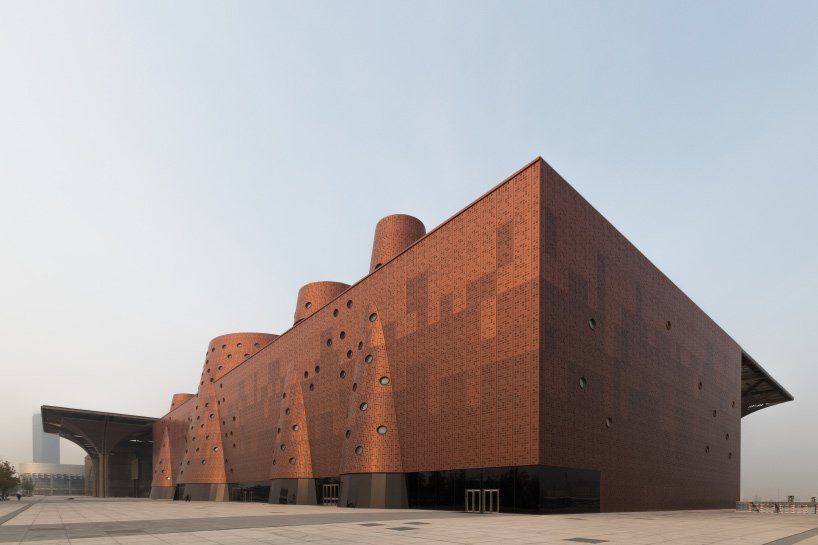
Tianjin Binhai Exploratorium by Bernard Tschumi Architects
Paris-based Bernard Tschumi Architects, in collaboration with Tianjin Urban Planning and Design Institute (TUPDI), have designed an exhibition complex aimed to showcase artifacts from the region’s industrial past through large-scale contemporary technology, including rockets for space research. Named Tianjin Binhai Exploratorium, the new 33,000sqm museum consists of a series of large-scale cones that create major rooms.
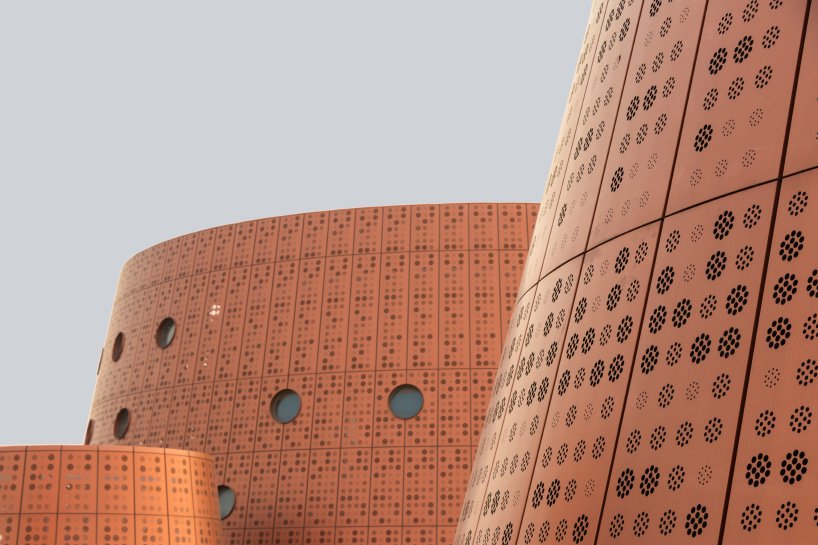
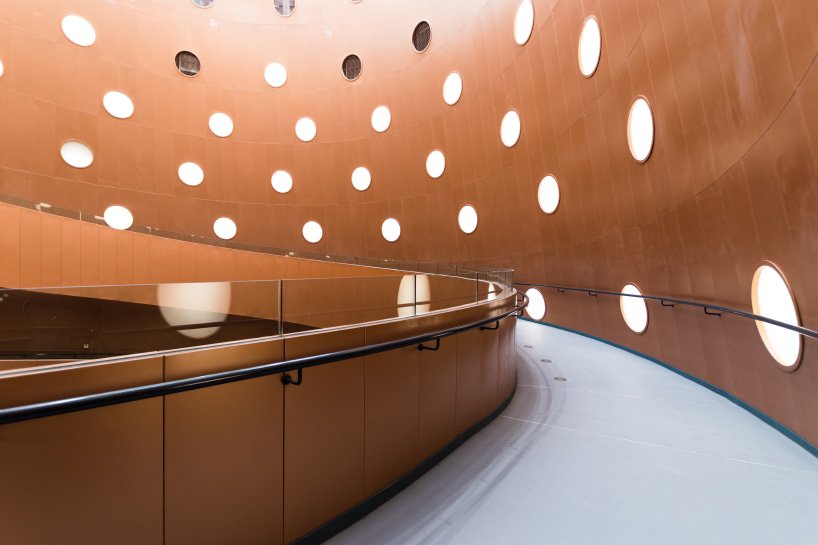
Tianjin Binhai Exploratorium by Bernard Tschumi Architects
The focal point of the building is the immense central cone — almost double the height of the Guggenheim Museum and connecting all three storeys— housing a grand lobby which provides access to all surrounding spaces and allows visitors to spiral through the large exhibition halls stacked on each end of the building. The Exploratorium also contains facilities for cultural events and exhibitions as well as galleries, offices, and restaurant and retail spaces.
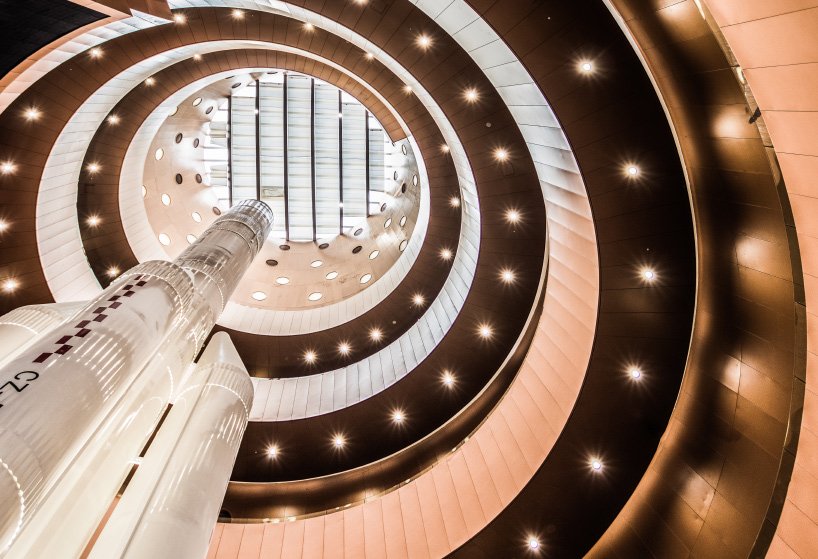
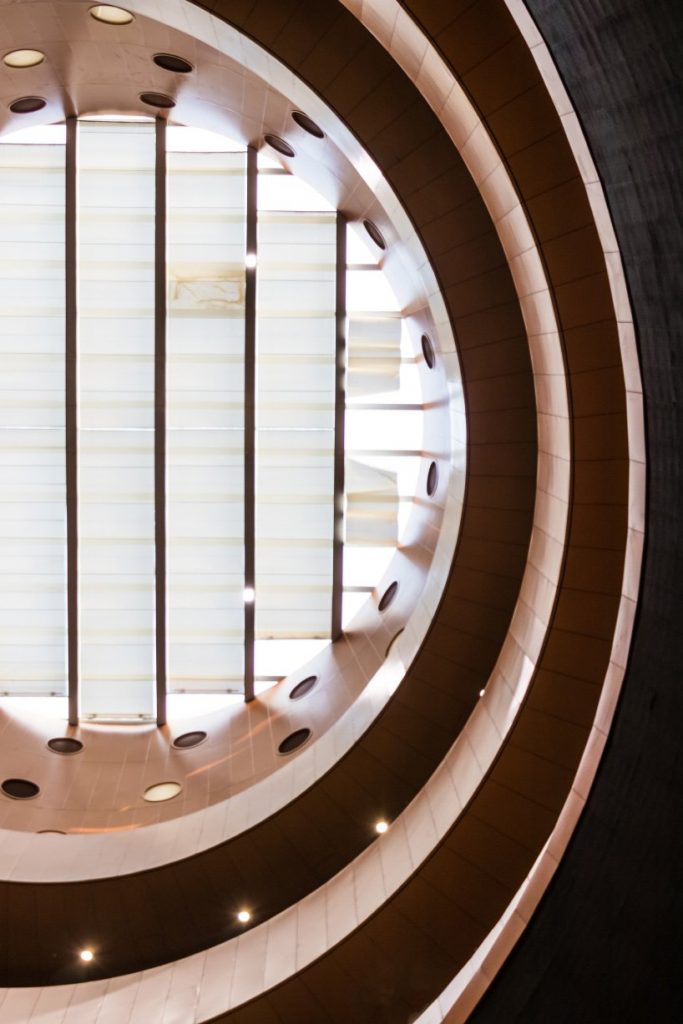
Tianjin Binhai Exploratorium by Bernard Tschumi Architects
Portholes and circular lightwells give each hall an individual character and configuration. They not only create an otherworldly fee, but also provide even, natural light to gallery spaces and reduce the energy loads required for artificial lighting. The perforated aluminum facade gives a unified presence to the building and helps reduce heat gain. The roof is accessible to visitors and serves as a promenade that offers views over the city.
More interesting museum buildings here and here